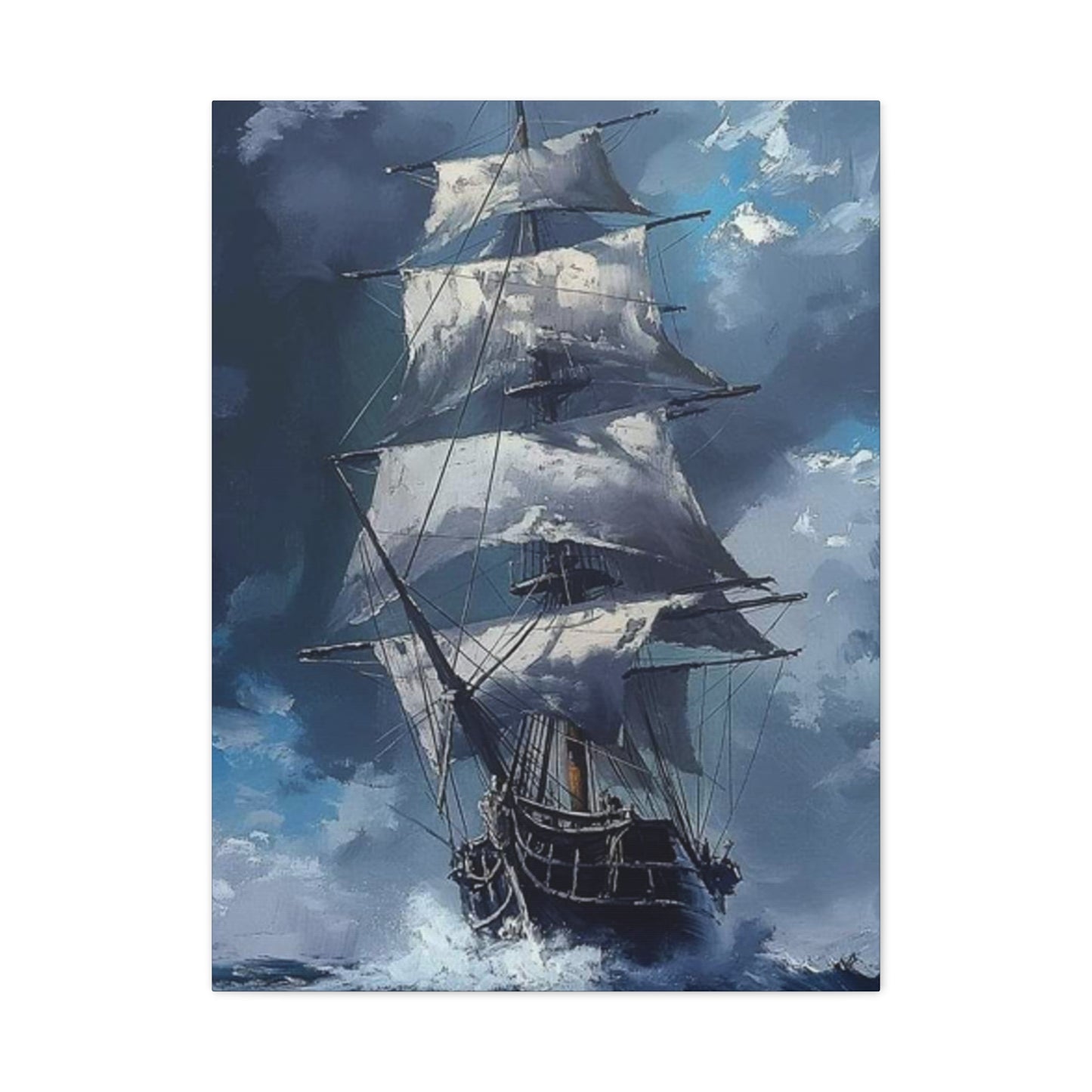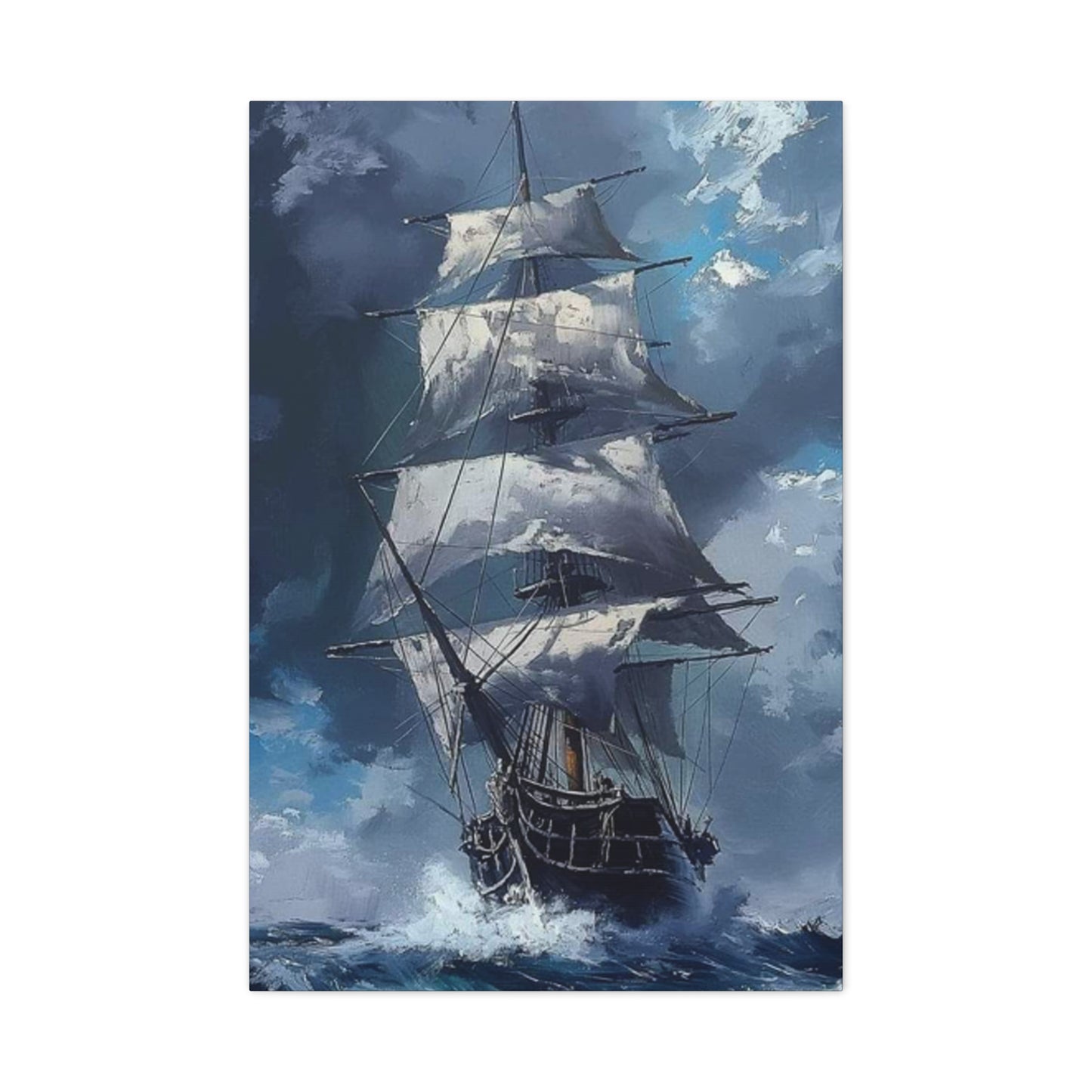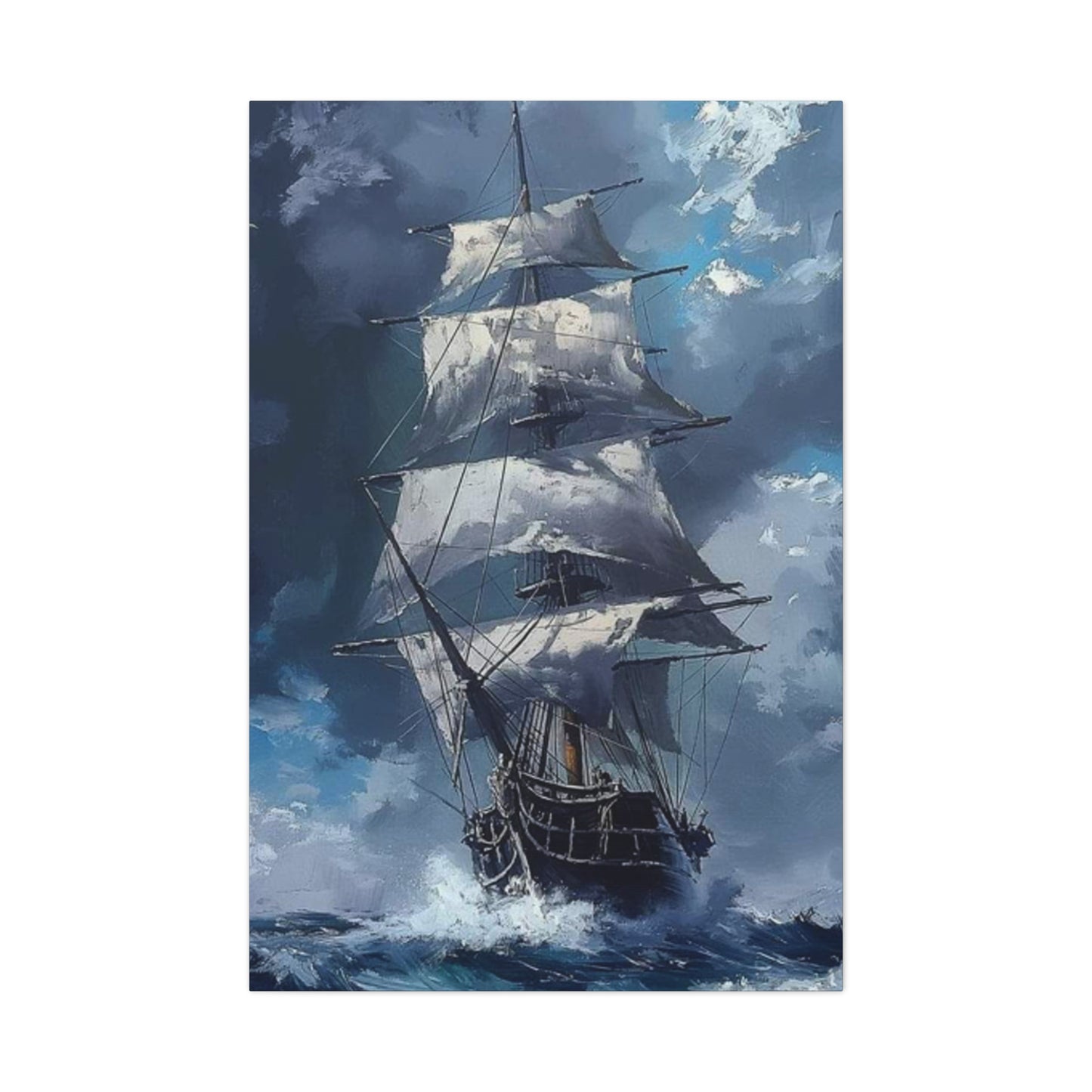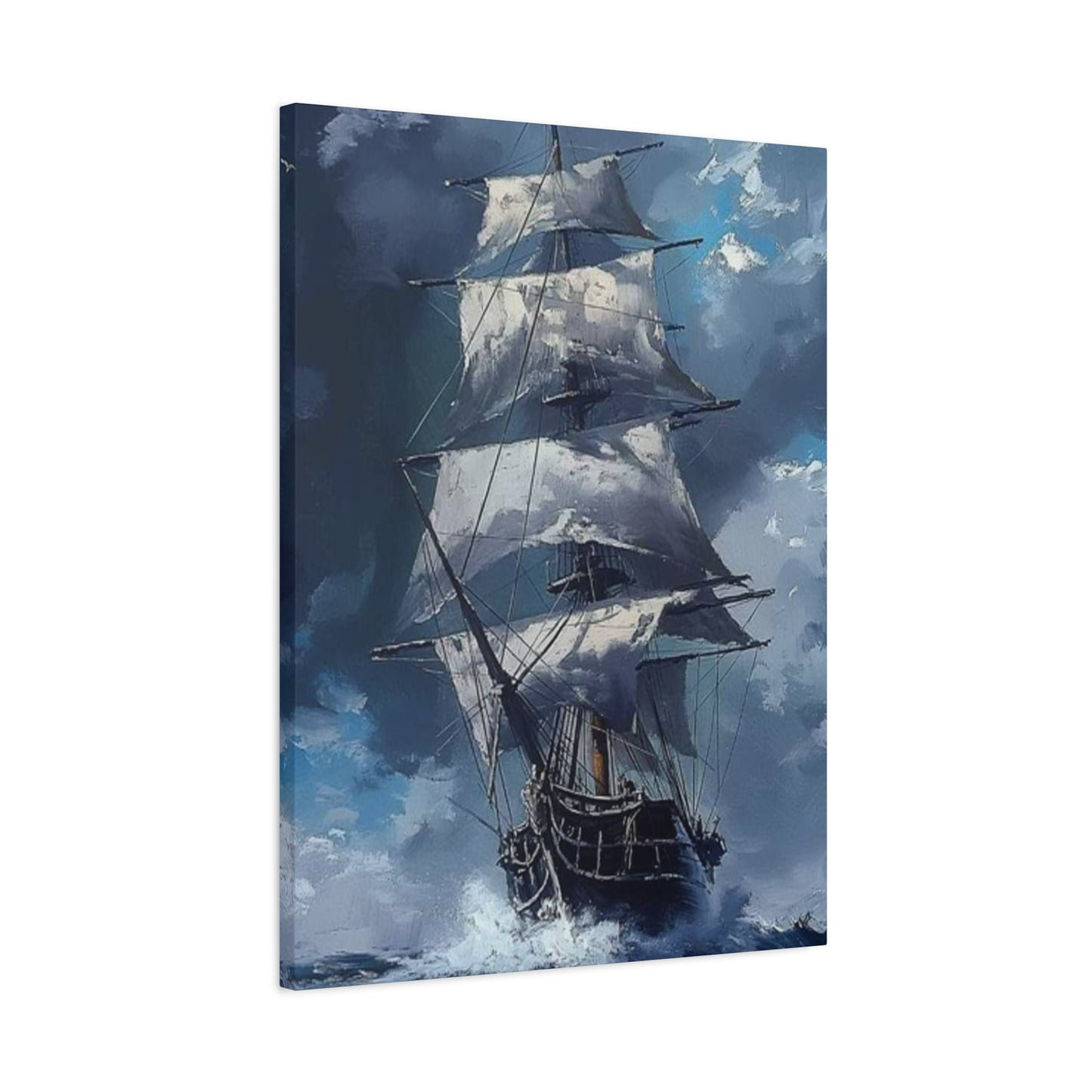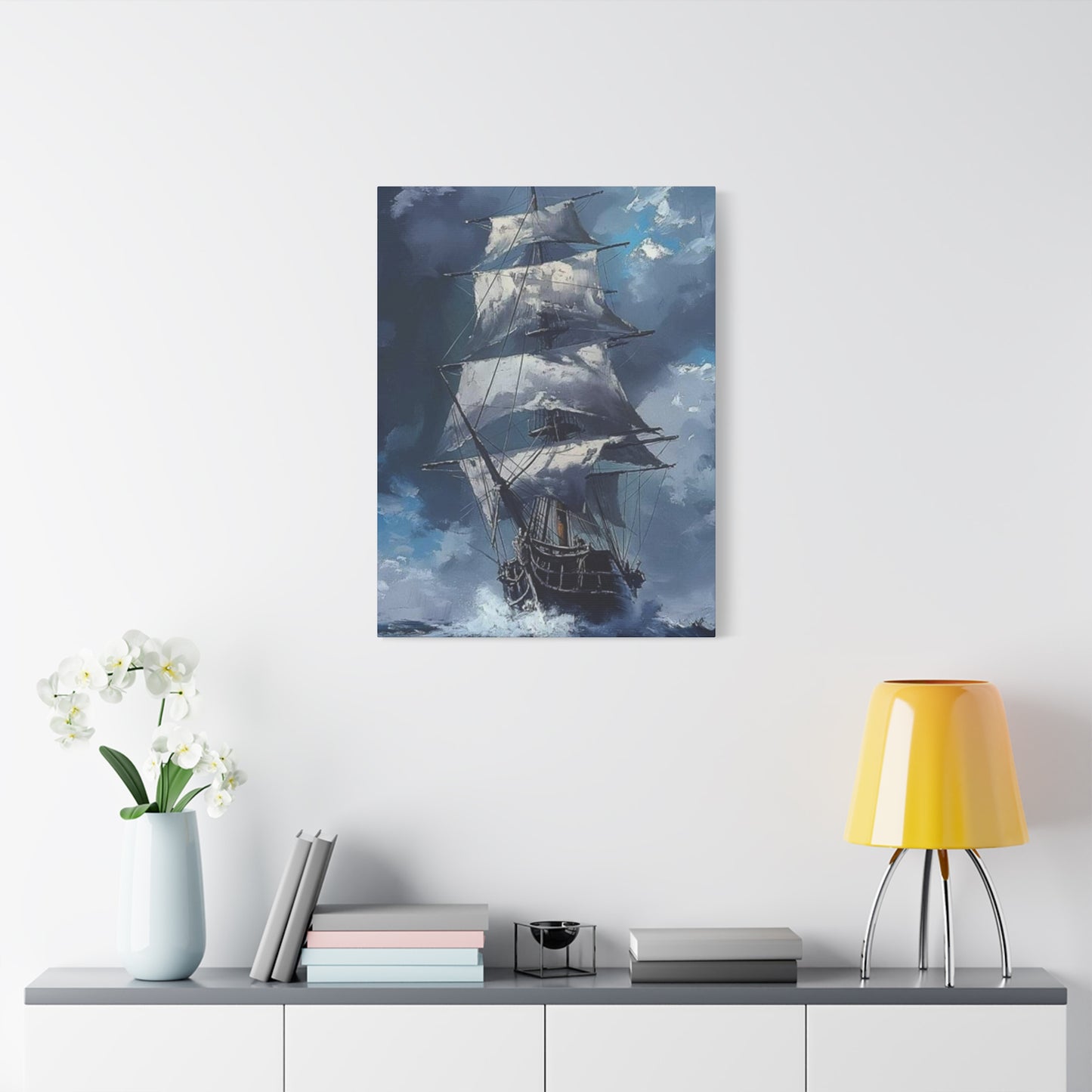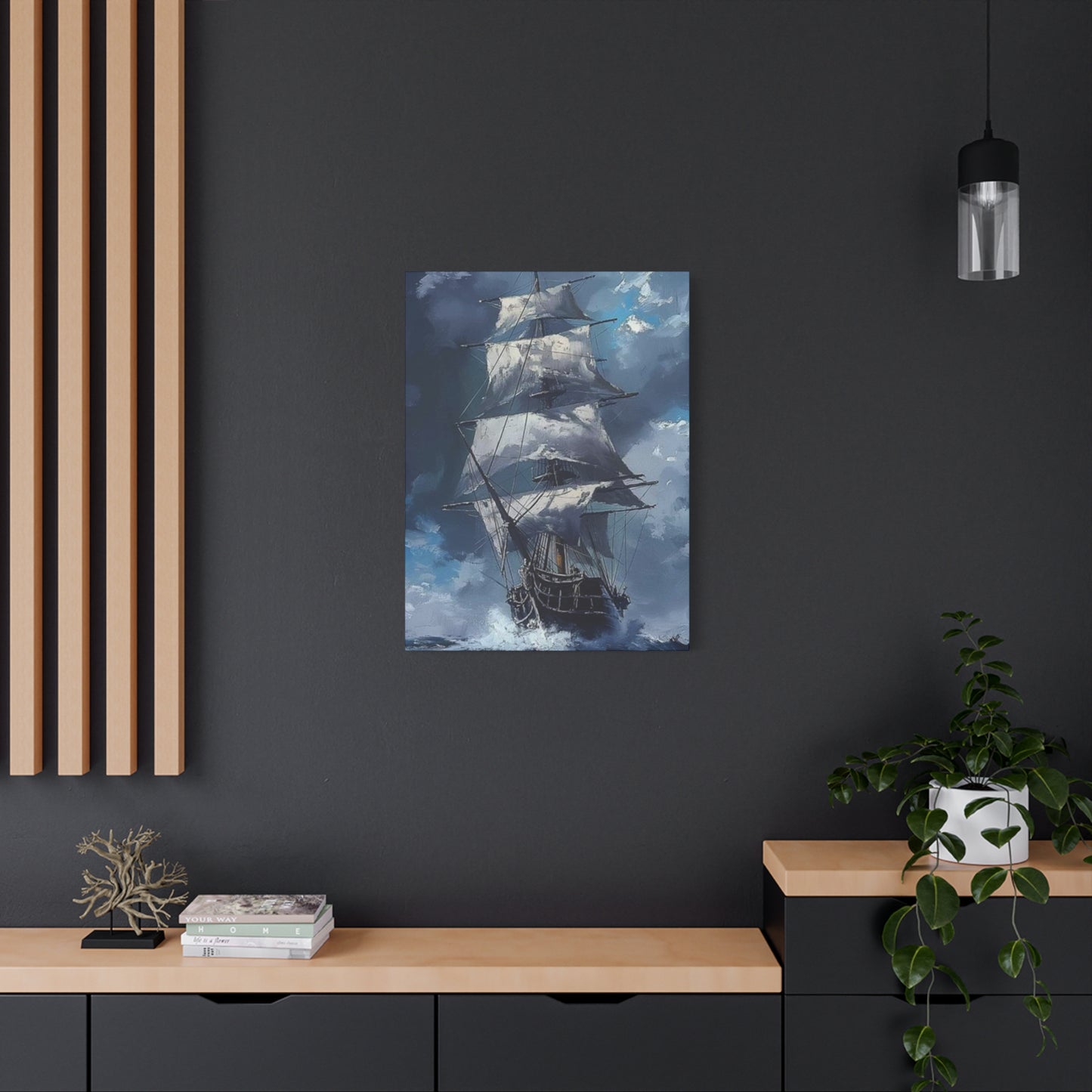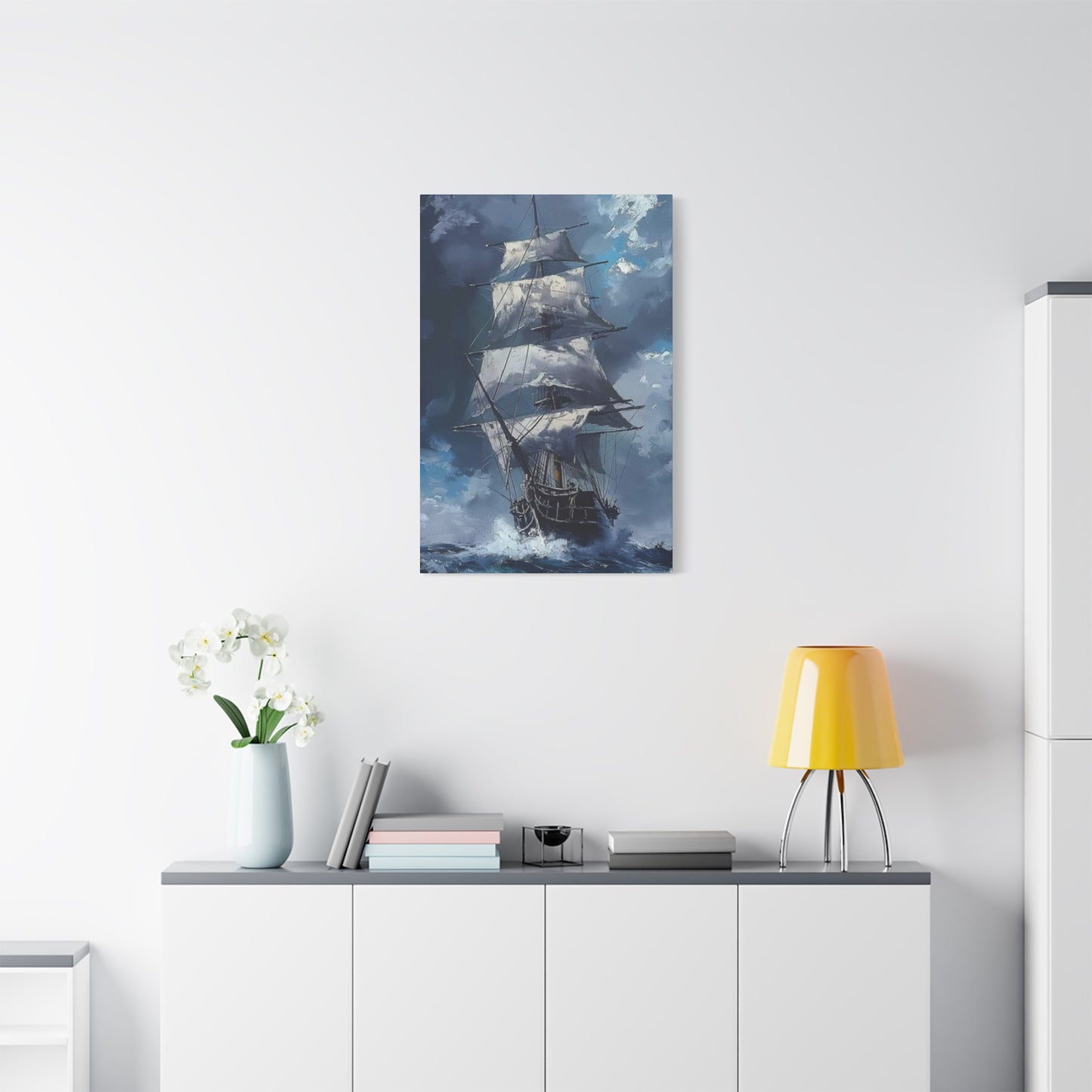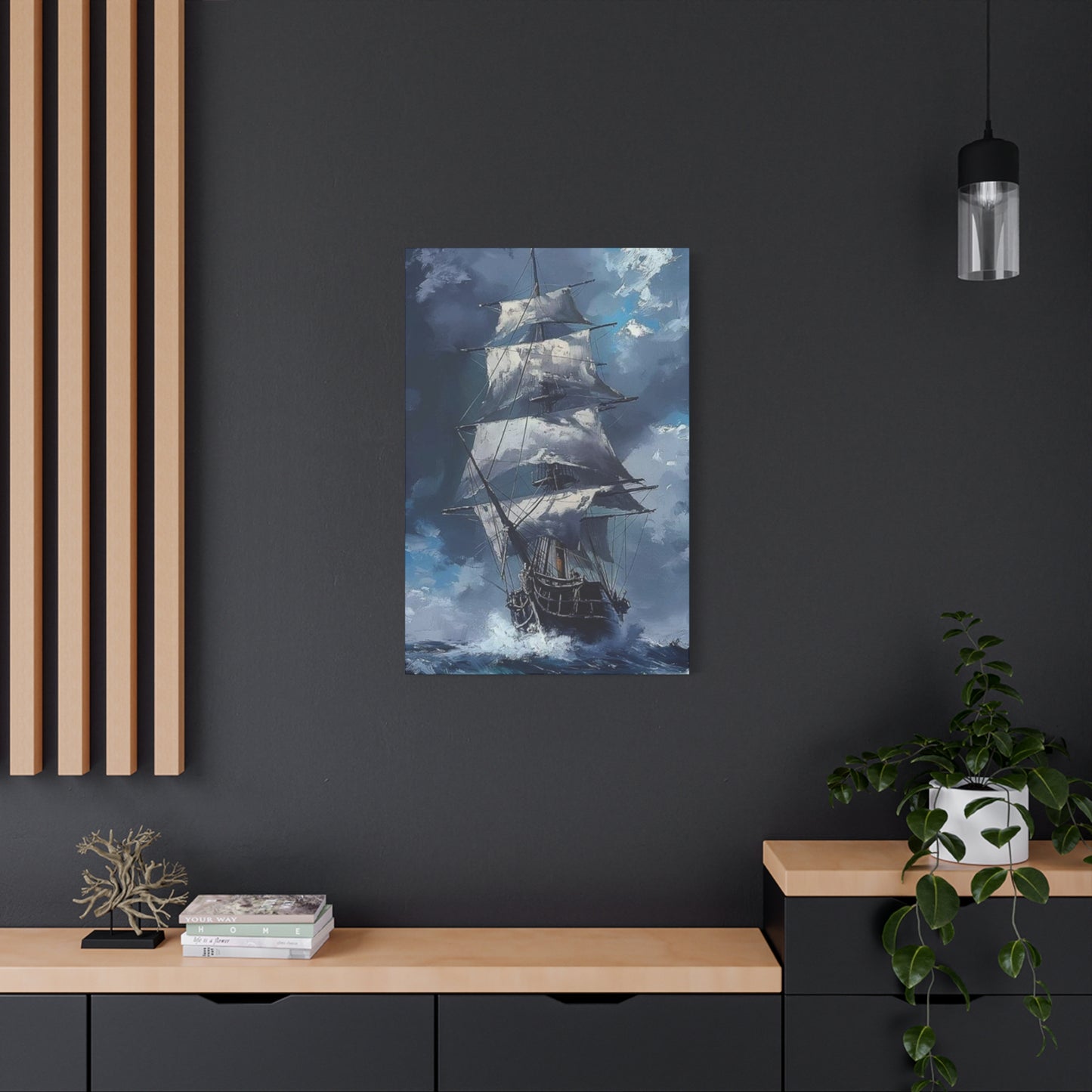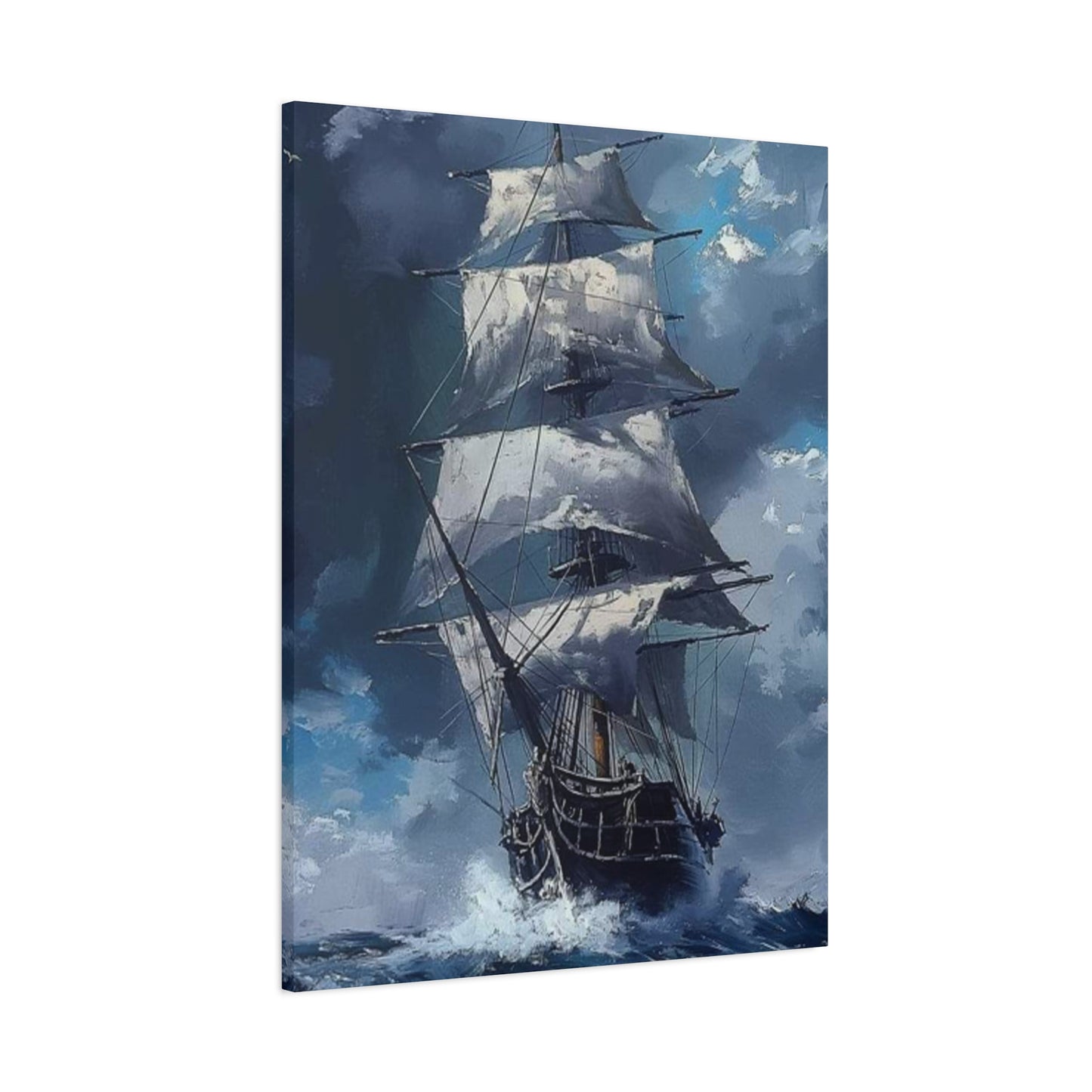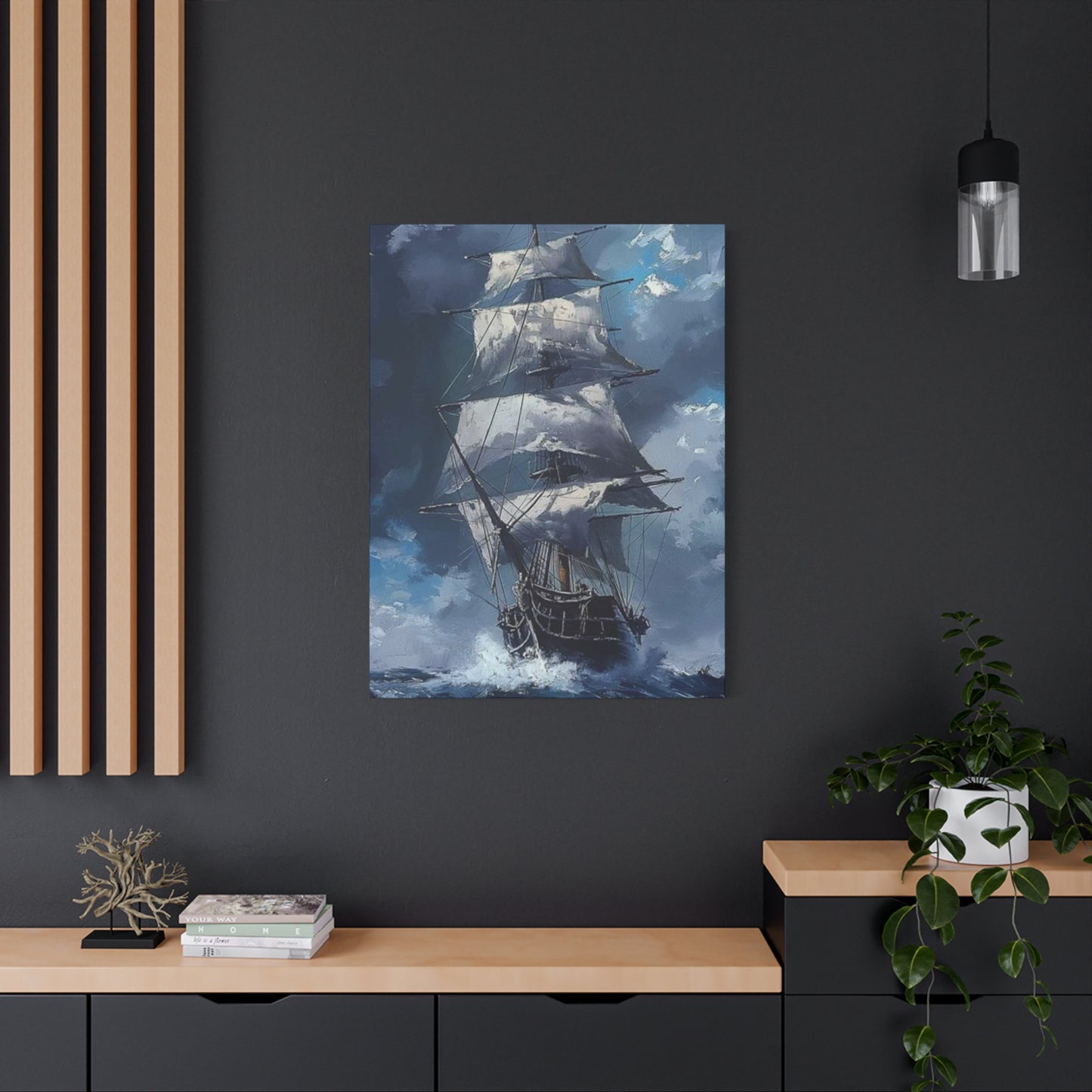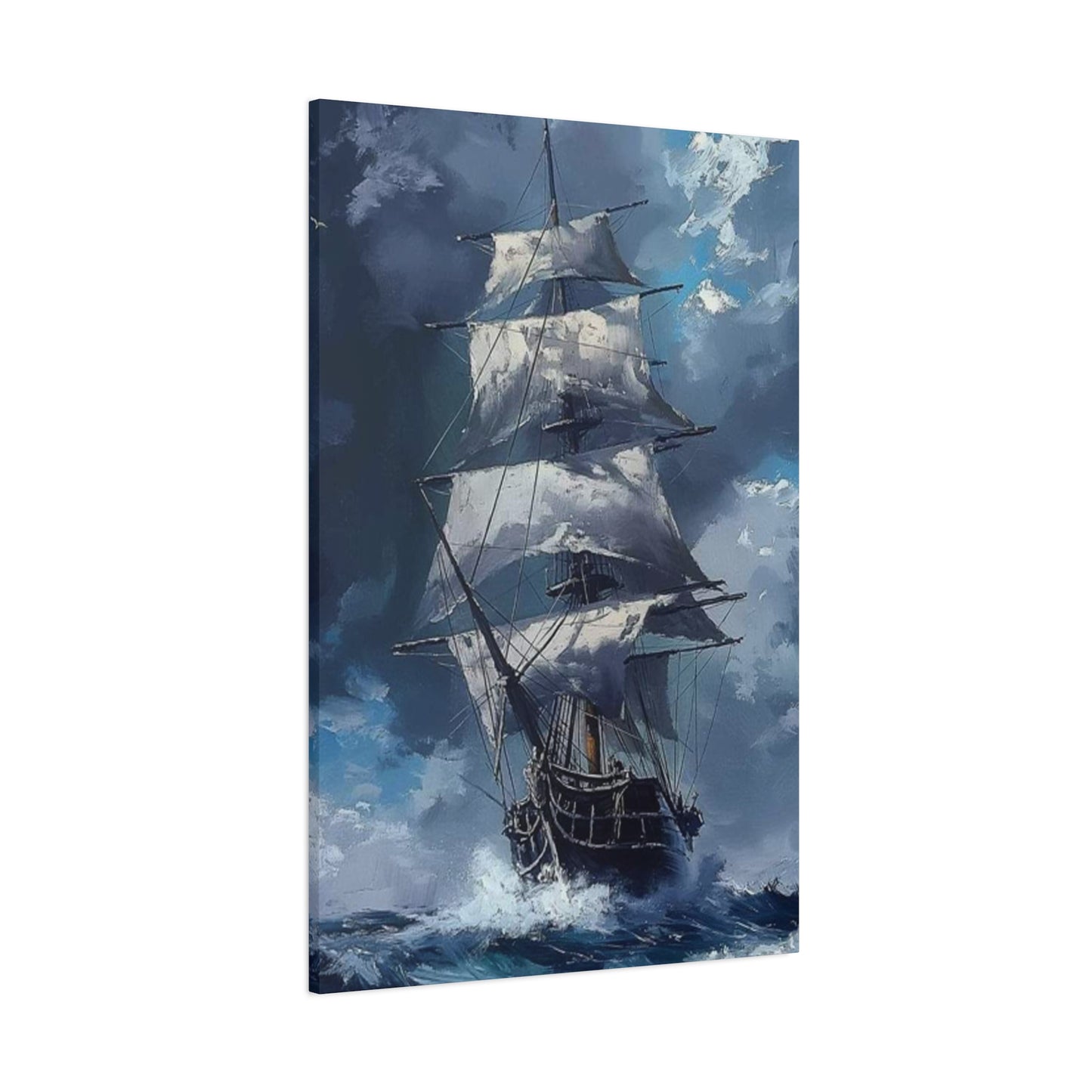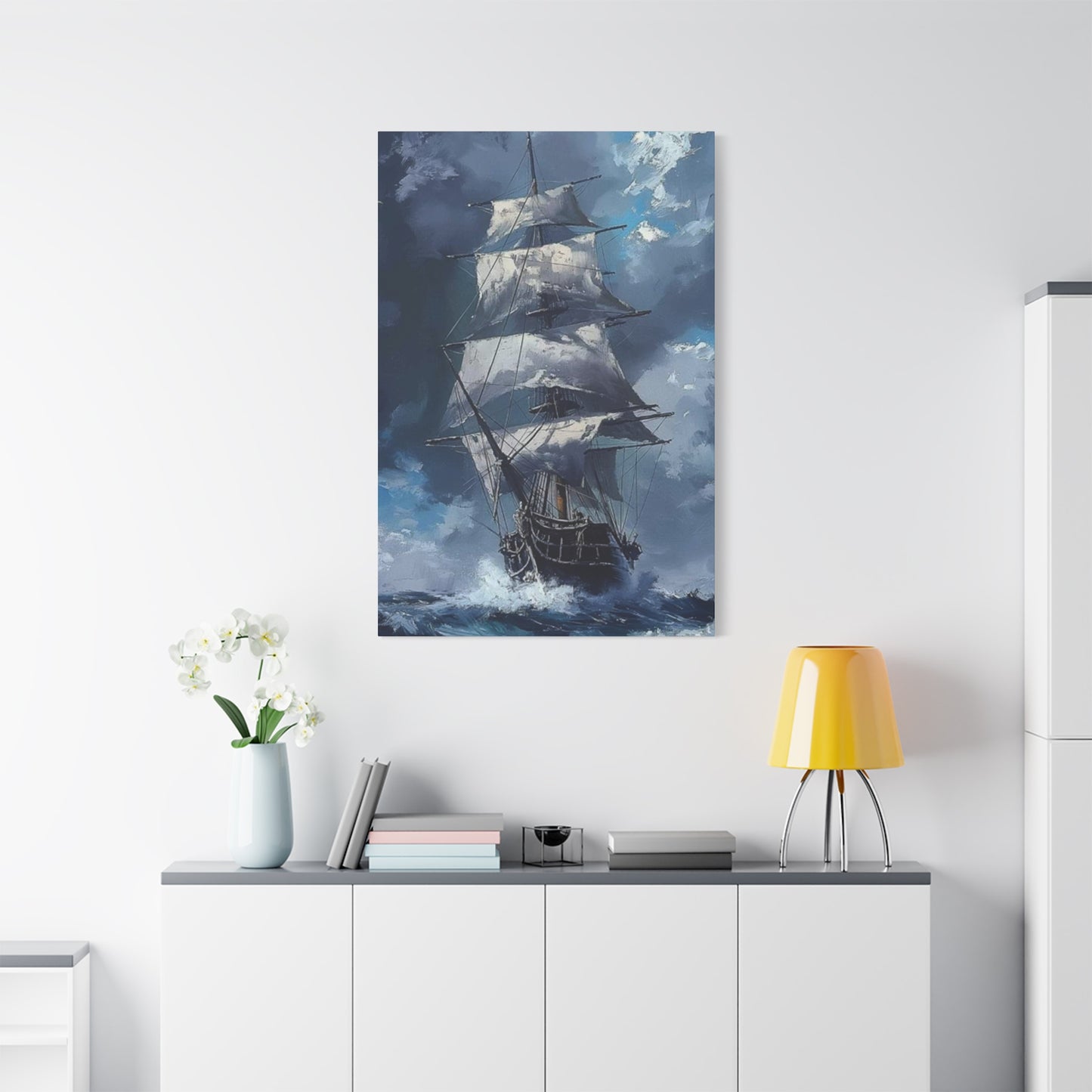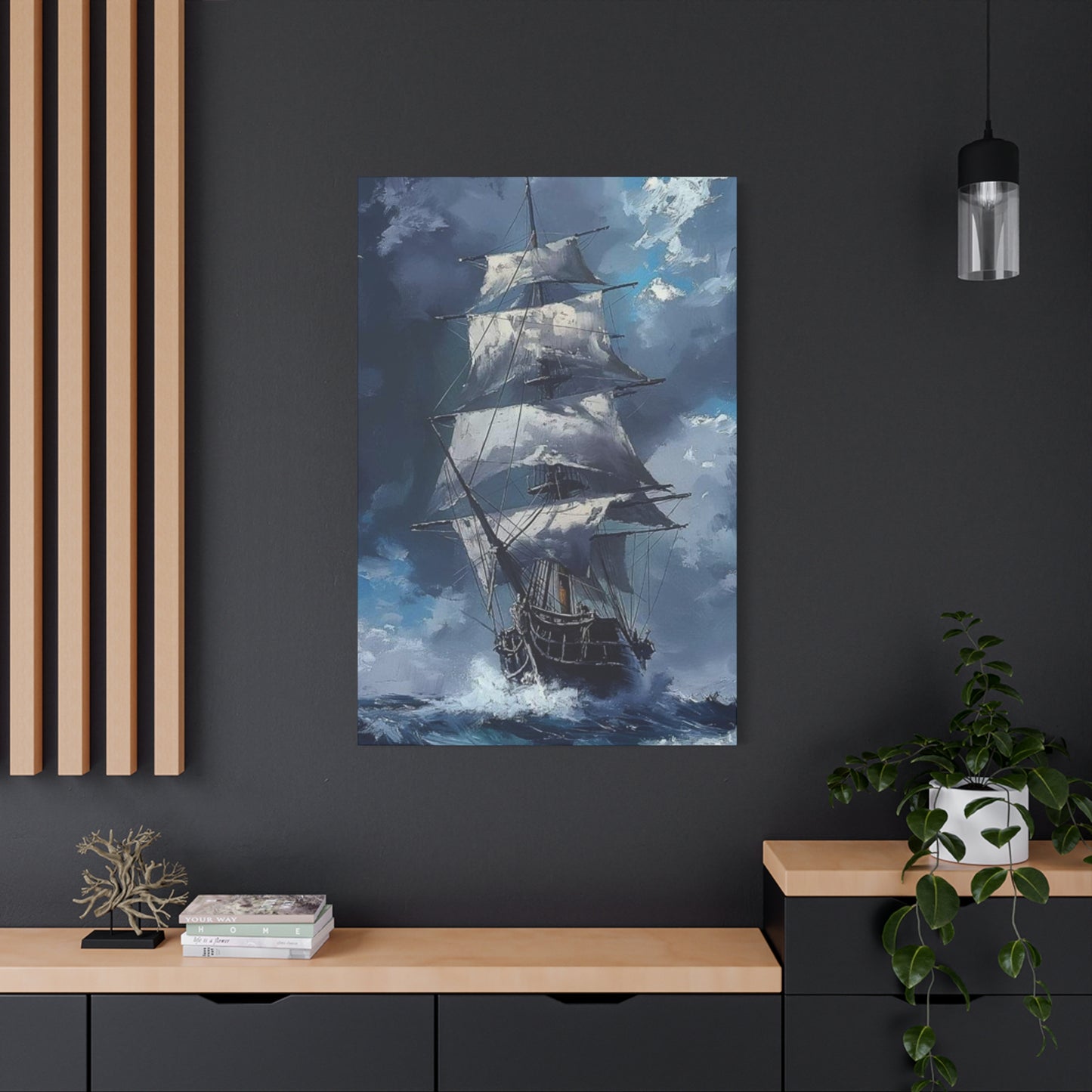Oceanic Majesty: A Definitive Exploration of Large Ship Sea Wall Art
The fascination with the sea and the vessels that traverse its vast expanse is a timeless human endeavor. From the earliest cave paintings depicting rudimentary boats to the grand oil paintings of the Dutch Golden Age, ships have remained a potent and recurring symbol in the world of art. This enduring allure stems from a complex tapestry of human emotion, historical significance, and the raw, untamable power of nature. A large ship in sea wall art is more than a mere decorative object; it is a portal to adventure, a monument to human ingenuity, and a reflection of our profound connection to the ocean. The image of a vessel, whether it's a majestic tall ship with billowing sails or a formidable modern freighter cutting through the waves, speaks to our innate desire for exploration, freedom, and conquest over the elements. These canvas prints capture a dynamic tension—the fragile yet resilient man-made structure set against the infinite and often turbulent backdrop of the sea. This juxtaposition evokes feelings of awe, respect, and sometimes even a humbling sense of our own smallness in the grand scheme of the natural world.
Furthermore, nautical artwork serves as a historical record, chronicling the evolution of maritime technology, trade, and naval warfare. Each type of ship tells a different story, from the Viking longships that struck fear into the hearts of coastal Europe to the elegant clippers that raced to bring tea from China. When we hang large ship canvas prints in our homes, we are not just displaying a beautiful image; we are connecting with centuries of human history, courage, and the relentless pursuit of new horizons. The sea itself is a powerful muse, its ever-changing moods providing an endless source of inspiration for artists. It can be a tranquil mirror of glass reflecting a serene sunset, or a raging maelstrom of chaotic energy. The ship becomes the protagonist in this oceanic theater, its journey a metaphor for our own lives, with its periods of calm sailing and its inevitable storms. The appeal, therefore, is deeply psychological, tapping into our collective unconscious and the archetypal journeys that define the human experience. It is a celebration of resilience, a nod to the spirit of discovery, and a constant reminder of the majestic and mysterious world that lies beyond the shoreline.
Capturing Historical Grandeur: Tall Ship Canvas Prints
There is a particular romance and grandeur associated with tall ships that no modern vessel can replicate. These magnificent sailing ships, with their complex rigging, towering masts, and acres of canvas sails, represent a golden age of maritime exploration and adventure. Tall ship canvas prints bring this historical grandeur directly into our living spaces, allowing us to connect with an era of discovery, daring naval battles, and epic voyages around the globe. When an artist captures a tall ship on canvas, they are doing more than painting a boat; they are preserving a piece of history and immortalizing the spirit of a bygone era. The details in such artworks are often staggering. From the intricate web of ropes and pulleys to the meticulously rendered woodwork of the hull and the proud figurehead at the prow, each element tells a story of craftsmanship and purpose. These vessels were the pinnacle of technology for their time, complex machines designed to harness the power of the wind.
A canvas print that accurately portrays a Spanish galleon, a British man-o'-war, or a swift American clipper ship becomes a conversation piece, an educational tool, and a source of endless fascination. The setting in which the tall ship is depicted is just as crucial as the vessel itself. A print might show a ship navigating through a misty morning fog, its silhouette a ghostly presence against the soft light, evoking a sense of mystery and anticipation. Another might capture the drama of a storm at sea, the ship heeled over at a sharp angle, its sails strained against the furious wind as it battles mountainous waves. This dynamic imagery speaks to the courage and skill of the sailors who manned these vessels. Conversely, a depiction of a tall ship at anchor in a calm, tropical harbor, bathed in the warm glow of a setting sun, can evoke a sense of peace, accomplishment, and the rewards of a long journey.
Modern Maritime Marvels: The Aesthetics of Contemporary Ships
While tall ships capture the romance of the past, the aesthetics of modern maritime marvels offer a completely different but equally compelling visual language. Canvas prints featuring contemporary vessels like massive container ships, sleek supertankers, and powerful icebreakers celebrate the scale, power, and minimalist beauty of 21st-century engineering. This form of nautical artwork appeals to a different sensibility, one that finds beauty in function, immense scale, and clean, geometric lines. The visual impact of a modern freighter, for instance, is one of overwhelming size and industrial might. An artist might choose to depict one of these giants from a low angle, emphasizing its towering hull and the sheer volume of its structure as it dwarfs the surrounding seascape. The repetition of colorful shipping containers stacked high on the deck creates a fascinating pattern of color and form, a testament to global commerce and interconnectedness.
This is not the organic complexity of a tall ship's rigging, but a structured, modular beauty that reflects the logic and efficiency of the modern world. The lighting in these pieces plays a critical role. A canvas print might showcase a container ship navigating a busy port at night, its own lights mingling with the city skyline to create a dazzling display of industrial activity. Or it could capture the vessel in the stark, clear light of midday on the open ocean, its clean lines and bold colors standing in sharp contrast to the deep blue of the water. These images are powerful statements about human ambition and our ability to build structures of almost unimaginable scale. Supertankers and bulk carriers, with their long, uninterrupted lines and functional superstructures, possess a minimalist elegance. A large ship in sea wall art depicting one of these vessels can create a sense of calm and order, its simple, powerful form gliding through the water with unstoppable momentum. The artwork can focus on the texture of the weathered steel hull, the subtle reflections on the water's surface, or the immense wake trailing behind the ship, all of which add depth and interest to a seemingly simple subject.
The Emotional Spectrum of the Sea: From Tranquil to Tempestuous
The sea is never just a backdrop in maritime art; it is a character in its own right, with a vast emotional spectrum that profoundly influences the mood of the artwork. The depiction of the water's state, from serenely tranquil to violently tempestuous, is a key element that allows large ship canvas prints to evoke a wide range of feelings in the viewer. The choice of sea conditions is a deliberate artistic decision that can transform the same vessel into a symbol of peace or a protagonist in a dramatic struggle for survival. A canvas print featuring a ship on a calm, placid sea can instill a deep sense of tranquility and peace. Imagine a lone sailboat at dawn, its reflection perfectly mirrored on a glassy surface, the water painted in soft pastel hues of pink and orange by the rising sun. This type of oceanic scene is meditative and soothing, perfect for creating a relaxing atmosphere in a bedroom or living space.
It speaks of quiet contemplation, gentle journeys, and harmony between the man-made vessel and the natural world. The ship seems to be at rest, its voyage easy and untroubled. This sense of calm can also be found in depictions of ships anchored in a protected bay, the gentle lapping of waves against the hull almost audible. These artworks invite the viewer to pause, breathe, and appreciate a moment of stillness. At the other end of the spectrum are the tempestuous scenes that capture the raw, untamed power of the ocean. A canvas depicting a ship caught in a fierce storm is a symphony of dramatic action and high emotion. The sky is dark and bruised with angry clouds, lightning may fork across the horizon, and the sea is a chaotic landscape of towering, white-capped waves. The ship is shown battling the elements, often tilted at an impossible angle, spray and foam lashing its decks.
This type of sea canvas print is exhilarating and awe-inspiring. It evokes feelings of struggle, resilience, and the sublime power of nature. It serves as a powerful metaphor for life's challenges and the strength required to navigate them. Such a piece can become a dramatic focal point in a room, radiating energy and telling a story of survival against the odds. Between these two extremes lies a whole range of moods—a ship sailing under a bright, cheerful sky with a brisk wind filling its sails suggests optimism and progress, while a vessel navigating through mist and fog can create a sense of mystery, uncertainty, and introspection. Ultimately, the sea in these artworks is a mirror for our own emotions, and the ship is our avatar, navigating the ever-changing waters of our own existence.
The Role of Light and Color in Oceanic Scenes
Light and color are the fundamental tools an artist uses to breathe life and emotion into a scene, and this is especially true for oceanic art. The way light interacts with water, sky, and the structure of a vessel can completely define the mood and impact of a large ship wall art canvas. The palette chosen by the artist, whether vibrant and saturated or muted and monochromatic, sets the emotional tone and draws the viewer into the world of the painting. The time of day is a crucial factor. A sunrise scene offers a palette of soft, warm colors—pinks, oranges, and golds—that infuse the artwork with a sense of hope, new beginnings, and gentle warmth. The low-angled light catches the edges of the sails and the ship's hull, creating a beautiful glow and long, soft shadows. Conversely, a sunset scene often employs a more dramatic and intense palette.
Deep reds, fiery oranges, and rich purples can fill the sky and reflect upon the water's surface, creating a mood that can be passionate, melancholic, or simply breathtakingly beautiful. The silhouette of a ship against such a dramatic sky is a classic and powerful image, symbolizing the end of a journey or a moment of profound reflection. Midday light presents a different challenge and opportunity. The high sun can create stark contrasts, deep shadows, and a brilliant, almost dazzling light on the water's surface. Colors appear more true and saturated. An artist might use this to highlight the crisp white of a sail against the deep azure of the ocean, creating a feeling of clarity, energy, and vitality. The play of light on the water itself is a complex subject that skilled artists master to create realism and depth. The reflection of the sky, the translucency of waves, the sparkle of sunlight on ripples—these details are essential for a convincing and engaging sea canvas print.
The color of the water can range from tropical turquoise and emerald green to the stormy, slate-grey and inky black of the deep ocean, each hue carrying its own psychological weight and geographical suggestion. Monochromatic or limited-palette artworks also have a powerful impact. A black and white or sepia-toned canvas print of a historic ship can evoke a sense of nostalgia and timelessness, resembling an old photograph or historical document. This approach strips the scene down to its essential elements of form, light, and shadow, often resulting in a piece that is both dramatic and sophisticated. Ultimately, the masterful use of light and color is what separates a simple depiction of a ship from a truly evocative piece of maritime art. It is the language of emotion, allowing the canvas to communicate feelings of joy, drama, peace, and awe without a single word.
Selecting the Perfect Canvas Print for Your Interior Design
Integrating a large piece of maritime art into your home requires thoughtful consideration of your existing interior design style. A large ship in sea wall art can serve as a stunning focal point, but the right choice of artwork will complement and enhance your decor, while the wrong one can feel out of place. The key is to match the style, color palette, and mood of the canvas print with the aesthetic of your room, creating a cohesive and harmonious environment. For homes with a coastal or beach house theme, the choice is often intuitive. Artworks depicting sailboats, serene beach scenes with distant ships, or vessels in bright, sunlit conditions are natural fits. The color palette of these pieces, often dominated by blues, whites, and sandy neutrals, will seamlessly blend with the light and airy feel of coastal decor. A canvas print of a classic schooner sailing on a bright blue sea can reinforce the nautical theme without being overly cliché, adding a touch of classic elegance and a sense of open-air freedom.
In a more traditional or classic interior, featuring dark wood furniture, rich textiles, and ornate details, a canvas print of a historic tall ship is an excellent choice. An oil painting-style print of a galleon or a man-o'-war, with its rich, deep colors and dramatic lighting, can add a sense of history, sophistication, and gravitas to the space. These pieces work beautifully above a fireplace, in a study, or in a formal dining room, lending an air of worldly travel and historical appreciation to the environment. For modern and minimalist interiors, which prioritize clean lines, neutral colors, and uncluttered spaces, a different approach is needed. Here, a canvas featuring a contemporary vessel like a supertanker or a container ship can be a surprisingly effective choice. The strong geometric forms and minimalist aesthetic of these ships complement the design principles of modern decor. A black and white photograph of a freighter's bow cutting through the water, or an abstract interpretation of a ship's silhouette, can make a bold and artistic statement.
The key is to choose pieces with a simple composition and a limited color palette that do not overwhelm the serene and ordered nature of the space. For industrial or loft-style interiors, which often celebrate raw materials like exposed brick, concrete, and metal, maritime art depicting the grittier side of seafaring can be very effective. Images of working vessels in a busy port, the weathered and rusted hull of a ship, or the complex machinery on the deck of a freighter can resonate with the industrial aesthetic. These pieces celebrate function, texture, and the beauty of well-worn objects, adding an authentic and powerful character to the room. Ultimately, the perfect canvas print is one that not only appeals to your personal taste but also speaks the same design language as your home. It should feel like a natural extension of the space, completing the room's story and providing a captivating window to the majestic world of the sea.
The Symbolism of Ships: Journeys, Adventure, and Discovery
Ships are among the most powerful and multi-layered symbols in human culture, resonating deeply within our collective consciousness. When we hang a piece of large ship wall art, we are inviting a rich tapestry of symbolic meaning into our homes. These vessels are far more than modes of transport; they are potent metaphors for life's journey, the spirit of adventure, and the relentless human quest for discovery. At its most fundamental level, a ship symbolizes a journey. Just as a vessel navigates the physical ocean, we navigate the metaphorical seas of our own lives. The ship's voyage, with its departure, its time at sea, and its eventual arrival at a destination, mirrors the human life cycle. A canvas print depicting a ship setting sail from a harbor can represent new beginnings, ambition, and the courage to leave the familiar behind in pursuit of a goal. A ship on the open ocean speaks to the heart of the journey itself—the challenges, the solitude, the perseverance required to stay the course.
An image of a ship returning to port can symbolize accomplishment, safety, and the successful completion of a long endeavor. This makes maritime art particularly meaningful at significant life transitions, such as starting a new career, moving to a new home, or embarking on a personal project. The ship also embodies the spirit of adventure and exploration. For centuries, vessels were the only means of reaching the unknown, of discovering new lands, new cultures, and new possibilities. They represent the courage to venture beyond the horizon, to face the unknown, and to expand the boundaries of our world. A sea canvas print, especially one featuring a historic vessel of exploration like a caravel or a Viking longship, taps into this innate human curiosity and desire for what lies beyond. It is a tribute to the explorers, pioneers, and trailblazers who dared to chart a new course.
It can serve as a daily inspiration to be more adventurous in our own lives, to take calculated risks, and to remain open to new experiences. Furthermore, a ship can be a symbol of safe passage, commerce, and connection. Ships bridge continents, carry goods, and connect disparate parts of the world. They are facilitators of trade and cultural exchange. A depiction of a bustling harbor filled with ships can symbolize prosperity, community, and the interconnectedness of the global family. In a more personal sense, the ship can represent a safe vessel to carry us through life's turbulent waters. It can be a symbol of security, resilience, and the ability to weather any storm that comes our way. The sturdiness of the ship's hull and the skill of its unseen captain can be a comforting metaphor for our own inner strength and capacity to navigate challenges. By understanding these layers of symbolism, our appreciation for large ship canvas prints deepens. They cease to be merely decorative and become sources of inspiration, reflection, and profound personal meaning.
Composition and Perspective in Maritime Painting
The way an artist composes a scene and the perspective from which the viewer observes it are critical elements that determine the narrative and emotional power of a maritime painting. In large ship in sea wall art, composition is not just about arranging elements pleasingly; it is about telling a story, creating drama, and guiding the viewer's eye and emotions. The choice of perspective can make the viewer feel like a detached observer, a passenger on board, or even someone adrift in the water, looking up at the immense vessel. A common and effective compositional technique is the use of a low-angle perspective. By placing the viewpoint near the water level and looking up at the ship, the artist dramatically emphasizes the vessel's size and power. The bow of the ship appears to tower over the viewer, creating a sense of awe, intimidation, and sheer scale.
This perspective is often used in tempestuous scenes to highlight the ship's struggle against monstrous waves, making the viewer feel the overwhelming force of the ocean. It instills a sense of respect for the vessel's strength and the forces it contends with. Conversely, a high-angle perspective, perhaps from a cliff top or the mast of another ship, offers a more strategic and comprehensive view. This bird's-eye perspective can convey a sense of omniscience and control, allowing the viewer to appreciate the ship's relationship to its surroundings—the coastline, other vessels, or the vast emptiness of the open sea. It can create a feeling of detachment and contemplation, turning the scene into a map or a diorama. This perspective is effective for depicting naval formations, busy harbors, or the solitary journey of a single ship across an immense ocean.
The placement of the ship within the frame is also a crucial compositional choice. A ship placed centrally often becomes a heroic and dominant subject. If it is sailing directly towards the viewer, it can feel confrontational and dynamic. If it is sailing away, it might evoke feelings of departure, loss, or the start of a long journey. Using the rule of thirds, where the ship is placed off-center, can create a more balanced and visually interesting composition. Placing the ship on one side of the canvas, sailing into the empty space on the other, creates a sense of movement, anticipation, and forward momentum. This implies that the journey is ongoing and that there is more to the story. The horizon line's position is another key element. A low horizon line, dedicating most of the canvas to the sky, can create a sense of openness, freedom, and grandeur. This is effective for showcasing dramatic cloud formations, a brilliant sunset, or the sheer vastness of the heavens. A high horizon line, which gives more space to the sea, focuses the viewer's attention on the water's texture, movement, and power.
The Majesty of Multi-Panel Canvas Art for Seascapes
For a subject as vast and expansive as the ocean, multi-panel canvas art offers a unique and powerful way to capture its majesty. Splitting a single image across multiple canvases, whether it's a triptych (three panels), a quad (four panels), or even more, creates a dynamic and modern presentation that can elevate the impact of large ship wall art. This format is particularly well-suited for seascapes, as it enhances the sense of scale, movement, and panoramic scope inherent in the subject matter. One of the primary advantages of multi-panel art is its ability to create a sense of immense width and horizon. A single, wide panoramic image of a ship on the open ocean, when split across several panels, draws the viewer's eye across the entire length of the artwork. The small gaps between the panels act as visual pauses, but they also paradoxically link the pieces together, encouraging the brain to perceive the scene as something even larger and more expansive than the wall it occupies.
This effect is perfect for conveying the endlessness of the sea and sky, making the room feel larger and more open. It transforms a wall into a wide-vista window looking out onto a maritime world. The multi-panel format can also be used to emphasize movement and dynamism. Consider a canvas print of a ship battling through a storm. By splitting the image, the chaotic energy of the waves and the dramatic angle of the ship can be accentuated. A wave might seem to crash in one panel and its spray carry over into the next, creating a sense of action and flow that a single canvas cannot always achieve. This segmentation can break down a complex scene into more digestible visual components, allowing the viewer to appreciate different parts of the action before stepping back to take in the whole dramatic tableau.
Furthermore, multi-panel displays offer a contemporary and artistic aesthetic that can be a design statement in itself. The geometric arrangement of the canvases adds a layer of architectural interest to the wall. The panels can be hung in a straight line for a clean, modern look, or they can be staggered for a more playful and dynamic effect. This versatility allows the artwork to be adapted to different wall sizes and shapes, providing more flexibility in interior design. This format works exceptionally well with modern and minimalist decor, where the clean lines and structured nature of the panel arrangement complement the overall aesthetic. Whether it's a serene sunset with a lone freighter stretching across five panels or a dramatic naval battle captured in a three-panel triptych, the multi-panel approach adds a layer of sophistication and visual impact. It takes the immersive experience of a sea canvas print to the next level, creating a truly epic and captivating focal point in any room.
The Serenity of Sailboats: A Lighter Nautical Touch
While large, imposing ships convey a sense of power and history, artworks featuring sailboats offer a different kind of nautical charm—one that is characterized by serenity, elegance, and a more personal connection to the water. Sailboat canvas prints provide a lighter, often more relaxing, touch to maritime decor. They speak less of industrial might or epic naval battles and more of leisure, sport, and the simple joy of harnessing the wind. These pieces are perfect for creating a calm, peaceful, and breezy atmosphere in a home. The sailboat itself is a symbol of grace and harmony with nature. Unlike a motor-powered vessel, a sailboat moves in quiet partnership with the wind and the water. This symbiotic relationship is often the central theme of the artwork.
A canvas might capture the elegant curve of a sail filled with wind, the sleek line of the hull cutting cleanly through the water, or the delicate dance of a fleet of boats during a regatta. The focus is on beauty, skill, and the quiet thrill of motion. These images are often less about overwhelming power and more about refined energy and agility. The settings for sailboat art are typically serene and picturesque. Common scenes include a single sailboat gliding across a calm bay at sunrise, a group of boats moored in a charming coastal harbor, or a race on a bright, sunny day with brilliant blue skies and sparkling water. The color palettes are often bright and airy, with an abundance of whites, blues, and warm, sunny yellows, which contribute to a feeling of optimism and relaxation. This makes sailboat art an ideal choice for living rooms, sunrooms, or any space where you want to evoke a feeling of a perpetual summer holiday.
A large ship wall art piece featuring a sailboat can also suggest a sense of freedom and independence. The image of a small boat on the vast expanse of water can be a powerful metaphor for self-reliance and charting one's own course in life. It represents a more intimate and direct engagement with the sea, a one-on-one dialogue with the elements. This can be deeply inspiring, serving as a reminder to find moments of peace and to navigate life with grace and skill. From a design perspective, sailboat art is incredibly versatile. A realistic, detailed painting of a classic wooden yacht can complement a traditional or preppy interior, while a more abstract or minimalist depiction of a sail's shape can fit perfectly into a modern home. A simple, almost graphic representation of a sailboat against a sunset can be a powerful and emotive statement piece. The theme is less about the vessel's historical weight and more about its elegant form and the tranquil lifestyle it represents, making it an accessible and universally appealing choice for nautical-themed art.
Industrial Ports and Harbors: The Gritty Beauty of Maritime Commerce
Beyond the open ocean, the world of industrial ports and harbors offers a rich and visually complex subject for maritime art. These bustling hubs of commerce, with their cranes, containers, and constant activity, possess a gritty, functional beauty that is both compelling and deeply modern. Canvas prints depicting these scenes capture the powerful heart of global trade and the ceaseless energy of human enterprise. This subgenre of large ship wall art moves away from the romanticism of the wild sea and focuses instead on the interface between land and water, industry and nature. The visual appeal of a harbor scene lies in its complexity and texture. The composition is often a dense tapestry of interlocking forms: the towering geometric structures of gantry cranes, the colorful grid of stacked shipping containers, the intricate network of docks and piers, and the powerful forms of the ships themselves—freighters, tugboats, and tankers.
An artist can find beauty in the rust and weathered paint of a ship's hull, the reflection of industrial lights on wet pavement, or the organized chaos of loading and unloading cargo. These images tell a story of work, power, and the relentless flow of goods that connects the world. The time of day can dramatically alter the mood of a port scene. A depiction at dawn or dusk can be particularly beautiful, as the low, warm light softens the hard industrial edges and casts long, dramatic shadows. The lights of the port beginning to twinkle on against a twilight sky can create a scene that is both industrial and magical. Night scenes are also powerful, with the harsh artificial lights of the port creating stark contrasts, deep shadows, and vibrant reflections on the water's surface. These nocturnal images can have a futuristic or dystopian feel, highlighting the 24/7 nature of global logistics.
A canvas print of a harbor scene is an excellent choice for an urban, industrial, or contemporary interior design scheme. It brings a sense of dynamic energy and worldly sophistication into a space. It’s a celebration of the modern world, finding art in the places and processes that are often overlooked. This type of artwork can be a real conversation starter, prompting discussions about trade, technology, and the complex systems that underpin our daily lives. It also serves as a tribute to the human ingenuity and labor that keeps these vital arteries of commerce flowing. While a tall ship in a storm speaks of a battle with nature, a freighter in a busy port speaks of humanity's attempt to organize and control its world. Both are powerful narratives, and the gritty beauty of the industrial harbor provides a compelling, contemporary chapter in the long story of our relationship with the sea.
Abstract Interpretations of Nautical Themes
Maritime art does not have to be literal or realistic to capture the essence of the sea and the vessels that sail upon it. Abstract interpretations of nautical themes offer a fresh, modern, and often more emotionally direct way to engage with the subject. These pieces move beyond depicting a ship and instead aim to convey the feeling of being at sea, the energy of the waves, or the essential form of a vessel. An abstract sea canvas print can be a bold and sophisticated choice, focusing on color, texture, and form to evoke a maritime mood. An artist might deconstruct the image of a ship into its most basic geometric shapes—the curve of the hull, the vertical lines of the masts, the triangular shape of a sail. These forms can then be rearranged, overlapped, and rendered in a non-naturalistic color palette to create a dynamic composition that is suggestive of a ship without being a direct representation.
The result is an artwork that engages the viewer's imagination, inviting them to find their own meaning and connection within the piece. This approach can be both intellectually stimulating and visually stunning, making it a perfect fit for a contemporary art collection. The sea itself is a perfect subject for abstraction. The movement of water, the play of light on its surface, and the raw energy of a storm can be expressed through bold brushstrokes, layered colors, and expressive textures. An abstract painting might use sweeping curves of deep blue and white to convey the power of a crashing wave, or subtle, blended shades of grey and green to capture the feeling of a calm, misty morning on the water. The focus is not on realism, but on capturing the emotional and sensory experience of the ocean. These pieces can be incredibly powerful, as they bypass the conscious mind and speak directly to our feelings. Texture can play a a significant role in abstract nautical art.
An artist might use thick applications of paint (impasto) to create a three-dimensional surface that mimics the rough texture of a weathered hull or the churning foam of the sea. Sand or other materials might be mixed into the paint to enhance this tactile quality. When reproduced on canvas, these textural details can add depth and a tangible quality to the artwork, making it a more immersive experience. Choosing an abstract piece of large ship wall art is a way to incorporate a nautical theme into your home in a subtle and artistic way. It avoids the potential clichés of more traditional maritime art and signals a more modern design sensibility. It can serve as a powerful color statement in a room, with the artist's chosen palette setting the tone for the entire space. Ultimately, abstract nautical art celebrates the fundamental elements of the maritime world—motion, light, energy, and form—in their purest and most expressive state.
The Lure of the Lonely Vessel: Solitude and Contemplation
There is a profound and poignant beauty in the image of a single, lonely vessel on the vast, empty expanse of the ocean. This recurring theme in maritime art taps into deep-seated feelings of solitude, contemplation, and the human condition. A large ship in sea wall art that features a solitary ship is more than just a seascape; it is a powerful meditation on our own journey through life. This imagery invites introspection and speaks to the moments of isolation and self-reliance that everyone experiences. The vastness of the sea in these artworks serves to emphasize the ship's solitude. The artist often employs a composition with a high horizon line, dedicating the majority of the canvas to the endless, undulating water, or a low horizon, highlighting the immense, empty sky above. In either case, the ship appears small and vulnerable, a single point of human endeavor in an overwhelming natural world.
This sense of scale does not necessarily evoke fear; instead, it can create a feeling of profound peace and tranquility. The lonely vessel is not lost, but rather purposefully navigating its own path, at one with the immense silence of its surroundings. This type of artwork is perfect for creating a contemplative and peaceful atmosphere in a personal space like a study, a library, or a quiet reading corner. It encourages the viewer to pause and reflect. The image of the lone ship can be a metaphor for the individual's journey. We are all, in a sense, captains of our own vessels, navigating the challenges and uncertainties of life. The solitary ship can symbolize inner strength, resilience, and the courage to forge one's own path, even when it feels like we are alone.
It is a tribute to the introspective side of the human spirit, the part of us that seeks meaning in quiet moments of reflection. The mood of these pieces can vary greatly depending on the artist's treatment of light and weather. A lone ship in a calm, misty sea can evoke a sense of mystery and introspection, a journey into the unknown. A single sailboat bathed in the golden light of a sunset can suggest a peaceful end to a long day or a life, a moment of serene accomplishment. Even a solitary ship in a brewing storm can be a symbol not of despair, but of stoic endurance—the quiet determination to face adversity head-on. By focusing on a single vessel, the artist creates a more intimate and personal connection between the subject and the viewer. We are not distracted by a fleet of ships or the activity of a harbor. Our entire attention is on this one journey, this one story. The lure of the lonely vessel is its ability to mirror our own internal world, making it a timeless and deeply resonant theme in the world of sea canvas prints.
The Power and Drama of Naval Warfare in Art
Maritime art has long been a medium for chronicling the drama, power, and tragedy of naval warfare. From the epic clashes of wooden sailing ships to the formidable presence of modern warships, canvas prints depicting naval scenes capture a unique blend of history, technology, and high-stakes human conflict. These artworks are not just about ships; they are about strategy, courage, national pride, and the destructive beauty of military power. A piece of large ship wall art focused on naval warfare can be an incredibly dynamic and powerful focal point in a room, radiating energy and telling a story of historical significance. Artworks depicting the age of sail warfare are particularly popular for their dramatic and chaotic beauty. Imagine a canvas print capturing a battle between British and French men-o'-war.
The scene is a whirlwind of action: cannons roar, spewing fire and thick clouds of white smoke that obscure the view; wooden hulls splinter under the impact of cannonballs; masts crack and fall, bringing sails and rigging crashing down to the deck. The artist's skill is evident in capturing both the grand sweep of the battle and the small human dramas playing out on the ships. These paintings are historical documents and thrilling spectacles, celebrating the bravery of the sailors and the strategic genius of their commanders. They can bring a sense of history and gravitas to a study, office, or den. The transition to the age of steel warships, or dreadnoughts, in the early 20th century provided artists with new, powerful subjects. The sleek, grey, menacing forms of battleships and cruisers, with their massive gun turrets, created a different kind of aesthetic—one of industrial might and technological prowess.
A canvas print of a fleet of battleships steaming in formation on the open sea conveys a sense of immense, unstoppable power and order. Scenes from major naval battles of the World Wars, such as the Battle of Jutland or Midway, capture pivotal moments in history. The drama in these scenes often comes from the explosions, the plumes of smoke from burning ships, and the tiny silhouettes of aircraft swarming around the giant vessels. Even in the modern era, naval vessels like aircraft carriers and destroyers are compelling artistic subjects. An aircraft carrier, a floating city and airbase, is a testament to human engineering.
A canvas print capturing the launch of a fighter jet from a carrier's deck is a symphony of power, speed, and precision. The dramatic play of steam, light, and the powerful lines of the aircraft and ship create a visually stunning image. These pieces are well-suited to a modern aesthetic and can appeal to those with an interest in technology, military history, or engineering. While these artworks glorify the power and design of these vessels, they can also serve as a somber reminder of the human cost of conflict. A depiction of a damaged or sinking ship can be a poignant and powerful statement about the realities of war. Ultimately, art depicting naval warfare is about more than just conflict; it is about the peak of human ingenuity being pushed to its limits in the most challenging of environments.
Conclusion:
The enduring human fascination with the sea and the magnificent vessels that navigate its depths is a testament to our innate desire for adventure, our respect for the power of nature, and our appreciation for human ingenuity. This exploration into the world of large ship canvas art reveals that these are not mere decorations, but profound narrative pieces, capable of transforming a space and evoking a vast spectrum of emotions. They are windows to history, portals to distant shores, and mirrors reflecting our own life journeys. We have seen how the historical grandeur of tall ships, with their billowing sails and intricate rigging, can infuse a room with a sense of romance and classic elegance, connecting us to a golden age of discovery. In stark contrast, the clean lines and immense scale of modern maritime marvels, from colossal container ships to sleek tankers, offer a different kind of beauty—one that speaks to the power, logic, and interconnectedness of our contemporary world.
The choice of vessel itself sets a distinct tone, allowing for a personalized statement that can range from a tribute to historical heritage to an embrace of modern industrial aesthetics. The sea itself, we have learned, is a character of paramount importance in these artworks. Its mood, shifting from the serene tranquility of a calm dawn to the violent chaos of a raging tempest, directly dictates the emotional atmosphere of the piece. An artist’s masterful use of light and color further refines this emotional language, with the warm glow of a sunset creating a feeling of peaceful closure, while the stark, dramatic light of a storm evokes a sense of struggle and awe. This interplay between ship and sea, light and color, allows a single canvas to tell a complex story of peace, peril, solitude, or community. Integrating such a powerful narrative piece into one's home requires careful thought, matching the style of the artwork—be it classic, modern, or coastal—with the existing interior design to create a harmonious and impactful environment.
Furthermore, the symbolic weight of a ship is undeniable. It is a potent metaphor for journeys, both literal and metaphorical, representing the courage to leave safe harbors, the resilience to weather life’s storms, and the spirit of discovery that drives humanity forward. Whether it is the poignant solitude of a lone vessel on an endless ocean or the dramatic clash of warships in a historical naval battle, these images tap into deep archetypes and shared human experiences. The compositional choices made by the artist—the perspective, the placement of the horizon, the framing of the subject—all serve to heighten the narrative and guide our emotional response. From the expansive, panoramic view offered by multi-panel canvases to the subtle, introspective mood of an abstract interpretation, the ways to capture and display this maritime magic are as varied as the seas themselves. Ultimately, a large ship canvas print is an investment in more than just art; it is an investment in a story, an atmosphere, and a daily source of inspiration. It is a celebration of the timeless dialogue between humanity and the great, mysterious ocean.

















